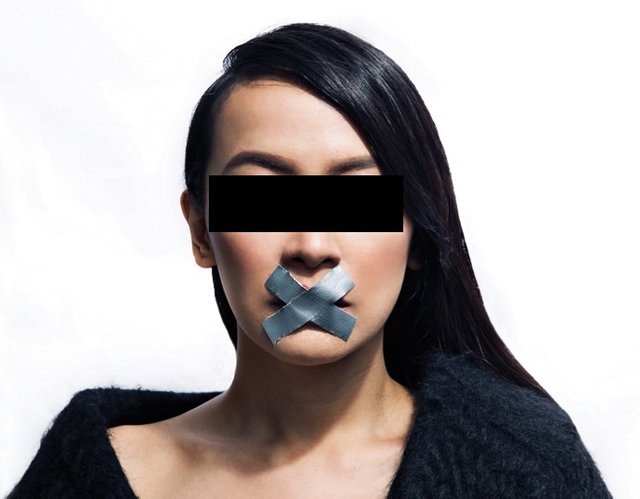My Suggestion in Solving Our Fake News Problem, Backed by Science
Scanning through my Facebook feed like I do on a daily basis, I came upon a post of a famous female personality, she-who-must-not-be-named, about an article concerning a hot political issue. The said article, shared by a millennial colleague in approval of what was written, had more than a thousand likes and a hundred comments, mostly supportive, in just a few minutes.
Something was off though: I have never heard of the website where it was published. Plus, based on the composition of the article’s headline, it isn't something that journalists from legitimate news outlets would write.
I clicked the link to do some fact-checking. The website presented itself as one offering news, but upon reading the article I noticed the glaring bias of the author. And as to the truthfulness of the report, there was none.
It was fake news. For sure.
Aside from the problematic language and few grammatical errors of the author, there was no mention of the sources of information. A politician was also quoted, complete with a graphic, but the words cannot be found elsewhere in other news outlets.
This raised many questions: How many people have been misinformed by this female personality with millions of followers on Facebook? Why do so many people believe that everything posted online is considered as gospel truth?

Base photo by Esquire
While the proliferation of fake news isn’t a social issue exclusive to the young generation, it hits majority of the Filipino youth who are the most active users of social media platforms, especially Facebook.
A report called Digital in 2017 released by social media management platform Hootsuite and United Kingdom-based consultancy We Are Social Ltd. indicated that there are now 47 million active Facebook accounts in the Philippines. Among these, accounts of the people aged 20 to 29 years are the most active.
With millennials growing up as digital natives, it becomes a problem when they lack good discernment or do not develop critical thinking towards fake news. This phenomenon exists not only in the Philippines but also in many parts of the world, making it a universal problem.
According to an independent, non-profit organization called Common Sense Media, kids in the United States of America are just as confused as the adults when it comes to fake news. Thirty-one percent of kids aged 10 to 18 shared a news story online that they later found was wrong or inaccurate.
It was also discovered that 49% of teens, or those aged 13 to 18, and 16% of tweens, or those aged 10 to 12, get their news from social media.
Meanwhile, The Media Insight Project, in collaboration with the American Press Institute and the AP-NORC Center, conducted a nationwide survey in 2015 among millennials or people who are 18 to 34 years old. The report revealed that among the 1,045 interviewed, 88% regularly get news from Facebook and other social media.
When more young people get their information from social media, the odds are greater that they fall into the trap of fake news especially now that peddling lies is well disguised to profit from sensationalist attitudes and to promote political ideologies.
The scope of fake news is too wide to ignore. While politics is typically at its core, it encompasses relevant social issues like corruption, transparency, accountability, human rights, environment, climate change, gender equality, and good governance – all of which should be under the Filipino youth’s radar.
An article could imply that Senator A has pocketed millions from public funds. Another could say that climate change is not real. One more could point out that HIV can only be transmitted by members of the LGBT community.
Some website could let flat-earthers explain about having definite proof that there is no way we live in a spherical planet. What gives?

Photo by Flat Earth Org
But what are the facts, really?
How the young people perceive and respond to news – including the fake ones – in this digital age has a great impact in the development of the Philippine society. It influences human behavior and how the millennials, as a generation, shape the future through their decisions.
Access to accurate information helps the Filipino youth decide what is best for nation-building which could be manifested in their different roles. When this fundamental right is endangered by the proliferation of fake news, making the country progressive becomes much more challenging, or in worst cases, impossible, for the young ones and the generations to come.
A way to fix this problem is to penalize those who spread misinformation.
But I believe a more important solution, since the first one is like punishing those who write fiction, is to help the young people be more critical in spotting fake news. With all the alternative facts in almost each corner of the dark internet, it’s the receiving end, composed of the readers, that needs intervention.
I started with my colleague who shared the fake news on Facebook.
Most people would resort to commenting on the post, but I thought the best option would be to send him a private message. I tried to explain to him in the most calming way possible how the article is misleading.
This is how authors Sara E. Gorman and Jack M. Gorman would want it when dealing with people who deny facts and insist on their fake news. They wrote “Denying to the Grave: Why We Ignore the Facts that Will Save Us.”
Both say that such an approach is anchored in a fundamental human tool: empathy. They believe that what’s driving people to believe unscientific beliefs, including fake news, is not ignorance but psychology.
“We should figure out why we are all so drawn to stories in the first place,” the two wrote in an article for TIME.
“Changing minds requires compassion and understanding, not disdain.”
And it was proven to work. After I explained empathically to my colleague, he edited the post to say that the article he shared is fake news. Thank heavens for he is open minded.
Quite a task if you ask me for it isn’t a movement done collectively, but if it is the best way to correct the young Filipino ignoramuses when it comes to fake news and help them become better members of the society, then all of us who know better should do it.
"The-one-who-shouldn't-be-named-but-we-know-who."
I hope this article would reach her. But I believe it is still futile because no form of reason can wake her up from her delusion of grandeur. Ooops!
Hahahahaha! I am mostly supportive of this administration but I hate it that she is its poster girl!